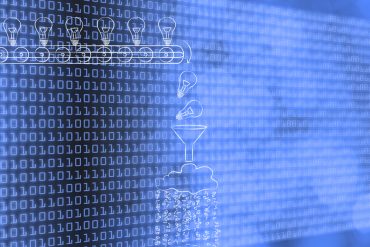
Going forward, many tech vendors will package social distancing tools in new ways to make these capabilities ubiquitous while tailoring them to vertical industry requirements.
Social distancing has been one of humanity’s primary tactics for fighting COVID-19. Considering the very real possibility of a second wave of the novel coronavirus, this practice is likely to endure.
Clearly, social distancing has had a huge impact on how work gets accomplished. In addition to the huge upsurge in work-from-home arrangements, we’re seeing the post-pandemic “new normal” take hold of the traditional shared offices that many people will soon be returning to:
- Sanitization-intensive maintenance: Custodial staff now wipe down and disinfect all surfaces daily, while office administrators now distribute hand sanitizer, masks, gloves, and sanitary wipes to all parts of the office on a regular basis.
- Contactless amenities: Facilities administrators have installed touch-free doors, garbage cans, and restroom fixtures.
- Group-averse facilities: Companies have closed shared meeting rooms, lunchrooms, coffee bars, exercise facilities, shared printers, and other infrastructure where groups would normally congregate.
- Prophylactic furnishings: Desks are now separated by plexiglass dividers, and covered with plastic shields to prevent the spread of infections.
- Lower-density layouts: Office layouts have been modified to spread desks further from each other and otherwise minimize the risk of people coming into close physical contact.
See also: Businesses Outfit Cameras With AI to Prevent Coronavirus Spread
AI will automate social distancing
On top of these changes in traditional offices, we see the “new normal” emerging in many digital innovations that have come to the forefront in the past several months. Many of these use artificial intelligence (AI) to maintain physical separations among people continuously and in every environment, including:
- Proximity sensing: Embedded in smartphones and wearables, proximity sensors are feeding personal digital assistants with real-time ambient AI on crowding conditions.
- Computer vision: Smart cameras are using AI to automate surveillance of crowds, power applications such as occupant counting and wait-time metering, and send alerts when people move too close to each other indoors or out in public.
- Location correlation: Mobile apps are relying on AI to correlate map data showing how well people generally are following social distancing guidelines, while contact-tracing apps identify the extent to which they’ve remained distant from other people who are infected with a virus or, potentially, have any other attribute of interest.
- Autonomous delivery: Autonomous delivery systems—such as drones—have come to the front lines in practically every real-world scenario, leverage AI to navigate, manage, and manipulate objects, and interact with humans.
- Robotic telepresence: Building on that new culture of virtual collaboration, we’re seeing more AI-powered robotic telepresence systems become a standard feature in work-at-home and even remote offices requiring full-fidelity conferencing capabilities.
Social distancing as a new generation edge application infrastructure
As risk mitigation tactics, these “new normal” infrastructure innovations—both physical and digital—are not likely to go away when the current pandemic wanes.
Going forward, we’re likely to see social distancing solutions as overlays to the Internet of Things (IoT) or edge computing solution packages. Several levels of such solutions will emerge in the marketplace:
- Post-quarantine edge solutions: Vendors will provide packages of smart biosensors and robotic cleansing platforms that automate the sanitizing of commercial spaces prior to allowing workers and customers to re-occupy them. These apps will be an integral component of facilities administrators’ toolkits for managing the sensitive process of ramping up and rescinding “work-from-home” orders.
- Pandemic-sensing edge solutions: Into these deployments, vendors will sell packages of smart cameras and thermal sensors that help facilities managers detect when non-quarantined people might be bringing infections into otherwise cleansed spaces. These apps will enable office managers to automatically trigger ingress restrictions, in-office warnings, automated cleansing tactics, and other infrastructure-based responses for preventing or containing an infection.
- Preventive-distancing edge solutions: Vendors will also provide packages of proximity and biosensing apps that enterprises for downloading to smartphones prior to being allowed to enter customer-cleansed spaces. These apps will provide individuals with AI-driven guidance for interacting at greater distances, or they may simply advise us to wash our hands and put on masks if we don’t wish to be promptly escorted from the facility.
No one can say for sure whether the current public-health crisis will ever vanish completely. We’ll need to brace ourselves for the possibility that there may be successive waves of COVID-19 infection down the road.
Takeaway
In the longer historical perspective, social distancing will be the foundation of a new generation of digital transformation practices. Enabled by AI-powered enterprise application infrastructures, social distancing will accelerate the trend toward seamless blurring of virtual and physical interactions in 21st-century business and consumer contexts of all types.
Maintaining minimum distances between people may become necessary in many specialized application scenarios, not just during pandemics. For example, social distancing can be useful for fire safety purposes, such as in alerting facilities administrators and their guests when a room’s occupancy has exceeded the legal limit. It may also be necessary for law enforcement, such as when the number of people on a public street or park exceeds the threshold that can be effectively policed.
Going forward, we can expect many tech vendors to package social distancing tools in new ways to make these capabilities ubiquitous while tailoring them to vertical industry requirements.





























